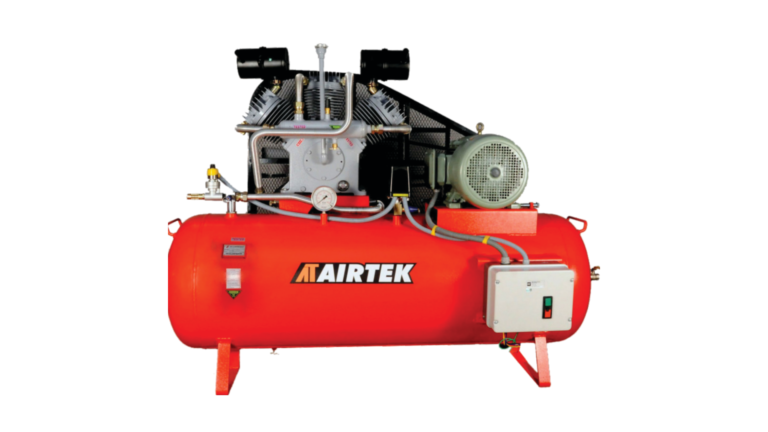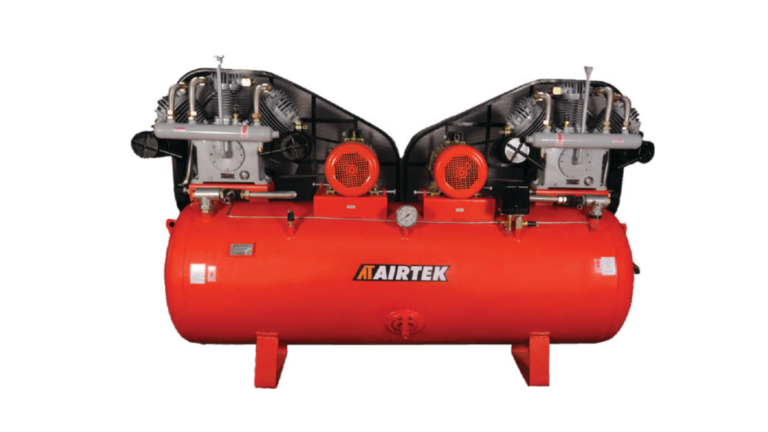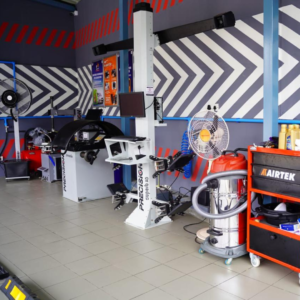The Epitome of Airtek Air Compressors: What You Need to Know?
What is an Air Compressor?
Air Compressors convert power into kinetic energy by compressing and pressurizing air. In other words, it is a device that takes in air at atmospheric pressure and delivers it at required pressure. Air compressors are the bedrock of all kinds of Industries. At Airtek, our adept team is successful in designing and manufacturing air compressors that meet all types of industrial standards. From scratch, all the raw materials are selected from the best available quality market, designed, manufactured, and tested. We are ISO 9001:2015 certified for the manufacture and supply of Automotive Garage Equipment, Automotive Lifts, Body Shop Equipment, and Industrial Air Compressors. Let us dive into the impregnable Array of Airtek Air Compressors.

Types of Airtek Air Compressors
As one of India’s leading Air compressor manufacturers and distributors, we design and manufacture all kinds of commercial and industrial air compressors of all types of necessities. Some of our notable air compressors are Single Stage Air Compressor, Two Stage Air Compressors, High-Pressure Air Compressor, Portable Air Compressor, Reciprocating Air Compressor, Engine driven Air Compressor, Small Air Compressor, and Screw Air Compressors.
In a single stage Air Compressor, the air is compressed in one step or stage. In the process, the air is drawn into the compressor cylinder through intake value. Compression takes place with the help of a piston, driven by a crankshaft. The piston moves up and down within the cylinder. During the upwards stroke, the piston compresses the air within the cylinder to increase its pressure. Following this, the storage tank collects the compressed air with the help of a discharge valve. When required, the compressed air is released from the tank to power tools, inflate tires, or perform other tasks.
Primarily, single-stage air compressors can generate pressure up to 120 PSI which is sufficient for many general-purpose tasks. Motor power will be ranging from 1 HP to 5 HP. The storage tank for a single-stage air compressor will range from 3 to 60 gallons based on the model. The primary usages are inflating tires, powering pneumatic tools, and performing DIY projects.
Advantages and Limitations:
- This is highly affordable which makes it accessible to a wide range of commercial users
- It is built with a simple mechanism which makes it easy to maintain and operate.
- It is portable and versatile for both home and professional use.
- It is limited in producing the amount of pressure it can generate which is not suitable for heavy-duty applications.
- They overheat and wear more quickly when compared to other high-pressure air compressors.
- Two-Stage Air Compressor:
Two-stage Air compressors provide high-pressure air and ensure a powerful and steady supply when compared to single-stage air compressors. It has two distinctive stages of air compression. In the first stage, the air is drawn into the compressor’s low-pressure cylinder. The drawn air is compressed into an intermediate pressure of around 90 PSI. Then the compressed air is pushed to the intercooler to reduce the temperature and increase the efficiency.
In the second stage, the partially compressed air passes to the high-pressure cylinder and is compressed approximately up to 175 PSI or more, depending on the model. Following, it is released into the storage tank.
Advantages and Limitations:
- It can provide high pressure and greater efficiency which is suitable for demanding tasks.
- It has a very good shelf life because of the intercooling system.
- Highly durable and can withstand continuous operations in industrial environments like Manufacturing plants, Automotive industries, Construction Sites, Energy Sectors, and Agriculture.
- It is a complex design and more expensive than Single Stage Air Compressors.
- Larger in Size thus it makes less portable.

3. High-Pressure Air Compressor:
High-Pressure Air Compressors are designed to deliver compressed air exceeding 1000 PSI. This is quite the same as a stage air compressor but it has multi-stage air compression. Where each compression is connected to the inter coolant system to manage the heat and reduce the tension on the compressor components. Finally, the highly compressed air will be stored in the specially designed tank or released for immediate use.
Some of the major applications of High-pressure air compressors are Scuba diving, Fire Fighting, Aerospace, Gas industries, and Automotive industries.
Advantages and Limitations:
- It can attain extremely high pressure and meet demanding applications.
- Highly versatile and used in a wide array of industries.
- Durable and comprises advanced control systems for safety measures.
- Due to their complex design, these compressors are more expensive.
- It consumes more energy especially when operating at extreme pressures.
4. Reciprocating Air Compressor:
A Reciprocating Air Compressor is also known as a Piston air compressor. It works on the principle of reciprocation which the piston moves back and forth within a cylinder to compress air. Based on the mechanism, it has inter and after coolers to reduce the temperature of the air before each stage. Oil-free, Oil lubricated, Single, and Two Stage air compressors are the types of reciprocating air compressors.
Some of the major applications of Reciprocating air compressors are Construction, Manufacturing, Agriculture, and Home Use.
Advantages and Limitations:
- Versatile and Durable it can withstand high pressures.
- Generally more affordable than other types of air compressors.
- Better suited for intermittent use as they are less efficient when compared to a Screw air compressor.
- Oil Lubricated air compressors might need regular maintenance, including oil changes and filter replacements.
- Less portable because of their huge size.
5. Engine Driven Air Compressor:
Engine Driven Compressors are operated by internal combustion engines, typically using gasoline or diesel fuels. They are particularly used when electrical power is unavailable or impractical. The working procedure is the same as the other air compressors but the power source is usually a gasoline or diesel engine. Following, air intake, compression, cooling, and Discharge.
Primary applications are Roadwork, Infrastructure projects, Disaster response, Remote industrial applications, and Mobile Service Units.
Advantages and Limitations:
- Easily transported to different locations and highly suitable for remote work.
- Suitable for Heavy-duty applications with a substantial amount of compressed air.
- From Construction to Agriculture, it meets high-end applications.
- Engine-driven compression produces Noise pollution, and fuel requirement is very high.
- Larger and heavier than electrical compressors.
6. Screw Air Compressor:
Screw Air Compressors are also known as rotary screw air compressors. It uses a rotary-type positive displacement mechanism to compress air. The crew air compressor consists of two rotors (male/female) meshed together inside a casing. Air is drawn in through the intake valves and enters the space between the rotors. The air between the rotor lobes compresses once the space between them decreases while rotating. While moving through the length of the rotors, the compression reduces the air’s volume and increases the pressure.
It is incorporated with the oil or water cooling systems. Oil-injected and Oil-free screw compressors are the types of screw air compressors. The major applications are Pharmaceutical, Electronics, Food, and Beverage Industries.
Advantages and Limitations:
- It has low maintenance and quiet operation.
- Due to its durable construction and efficient design, it has a longer operational life.
- Capable of running continuously with high efficiency.
- It consumes more energy for operation.
- Compared to other compressor, it is more expensive.

The above air compressors are some of Airtek’s prominent compressor products. You can also get customized designs delivered based on your necessity for your operations. Hence, if you are looking for compressors your search ends here with cost-effective offers.
